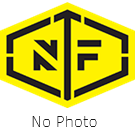| Tools | |
|---|---|
| Model | |
| Room | Metalworking Room |
| Work envelope/max capacity | |
| Link to manual | |
| Related tools | |
| Trainer(s) | No Training Available |
| Training Sessions | no training sessions include this tool |
| Knowledge keeper(s) | |
| Training document(s) | |
| Material Safety Data Sheet (MSDS) | |
| Safe Work Procedure | |
| Consumables | |
| Software | this machine has no software listed |
| Equipment type | tool |
| Metalworking Room Precautions apply |
|
You will be working in the Metalworking Room . In order to keep safe from hazards created by you or other workers using any of the tools in this room, the following precautions apply in addition to any other precautions: SafetyThere are many things happening in this room that could hurt bystanders as well as operators (fumes, blinding lights, noise). Always be vigilant when working in this room: alert any bystanders if your work could harm them, and be aware that other people may start doing hazardous work at any time. Metal will be hot after certain operations (welding, forging, turning); do not touch random metal that's lying around (especially on the welding table) unless you know it is safe (use an IR thermometer to check). Potential hazards
Housekeeping
|
